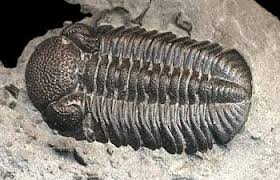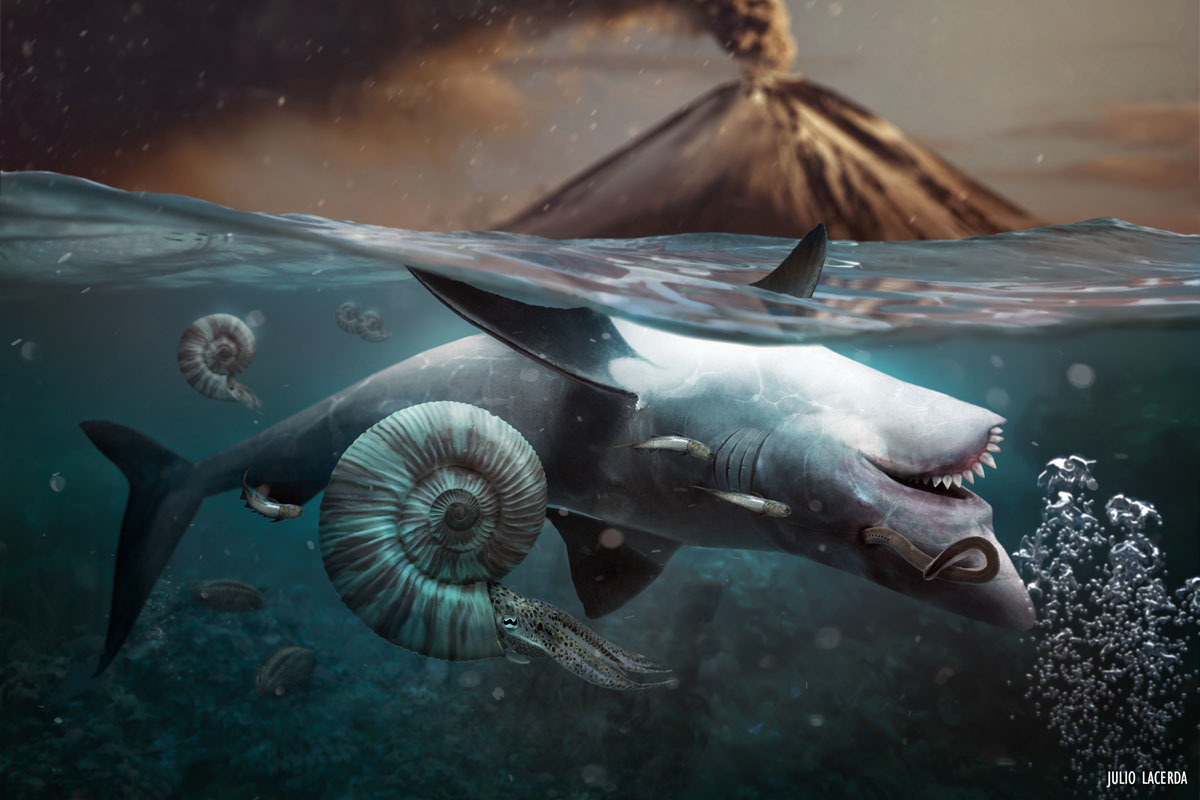
So, by now it’s pretty clear that humans will be responsible for the sixth extinction level event, which will occur when 75% of Earth’s organisms become extinct. Every year, between 10,000 and 100,000 species are thought to die out, because we need our avocados double wrapped.
So the question is obvious: how do we rank alongside the previous five extinctions? If we are going to destroy every ecosystem in search of profit for the 1%, we can’t half-ass this. It’s either planet-wide annihilation, or nothing.

Let’s do this.
Ordovician Extinction:
444 Million Years Ago
86% of Species Lost.
The first great extinction. The OG.
It is a closely guarded secret in the field of zoology, but life took three attempts to get where it is now. If you look at nearly any animal alive today, it is roughly symmetrical. We have a bilateral structure.
bilateral/bʌɪˈlat(ə)r(ə)l/adjective adjective: bilateral
1. having or relating to two sides; affecting both sides. “Bilateral hearing is essential for sound location.”
But, before the Cambrian explosion, there were attempts at life that were “tri-lateral” and “fractal“. These died out, probably due to their inability to adapt quickly enough. Earth was in a very volatile state 1 billion years ago. So, when bilaterals appeared and starting adapting successfully to the changing planet, it looked good for team life.
This is why we have to give credit to the Ordovician extinction. It really tried hard to nip life in the bud and wipe us out early. A real shame. Had it succeeded, there would be no such thing as Fortnite or dabbing. Or anything.

This extinction came about in pretty much the opposite way as is currently happening. A short but spicy ice age lowered sea levels and exposed the air to the silicate rock on the sea floor. The rock sucked out a load of carbon dioxide from the atmosphere and chilled the planet even further. A cold planet means a dead planet.
Really, not much for us to take away from this one. It was a strong first effort from Earth but the tactics were far too different to our “warm the planet” thing we’ve got going on. 86% of species dead isn’t bad, but this was right at the start of life. The actual number of species it wiped out is way lower than the kind we need to achieve now that we have organisms on land as well as in the water.
5/10. Interesting debut, perhaps a little rudimentary with its tactics. Room for improvement.
Devonian Extinction:
375 Million Years Ago
75% of Species Lost
The Devonian extinction is a lot like Lewis Del Mar. Its taken 70 million years for the second album to come out, and I have no idea how different this is going to be compared to the last one. Anyway.
Trilobites were a group of extinct marine arthropods.

They were the survivors of the Ordovician extinction, thanks to their thick armour and the world’s first eyes. Not the 576 megapixel masterpieces that we have today, but enough to detect if a predator was above them. It is likely that these organisms carried much of bilateralism through the Ordovician and into the Devonian. At this point, the first plants had sprung up on land, and were filling our atmosphere with sweet, sweet oxygen.
Big mistake.
Allegedly, the mass movement of plant roots into the virgin soil released a huge amount of nutrients into both of the planet’s oceans. If you’ve ever seen a pond covered in algae, you know what happens next. The eutrophication of all the water on earth.

Now this is more like it. An algal bloom that suffocated three quarters of all life is way way better than “ooh it got cold for a bit”. Clearly planet Earth realised that it could not kill all of life directly – instead it needed life to kill itself. This was the inspiration for Captain America: Civil War.
Unfortunately, you can only wipe out marine organisms this way. Anything on land will have to drink flowing water, but they’ll probably survive.
As for us, some good points to take away. We seem pretty hell-bent on destroying our oceans, as the pacific garbage patch and ocean acidification can testify. Maybe pump some fertiliser directly into the ocean and watch the algae do their thing. Oh wait, we already are.
6/10 extinction. Did well to wipe out what it could with the tools at hand. Couldn’t mark any higher, due a lack of impact on land. Moving on.
Permian Extinction:
251 Million Years Ago
96% of Species Lost
Right, now the big guns are out. The Permian extinction is the closest life on Earth has ever come to ending. This is “The Great Dying”. This is the motherlode.
This is our greatest rival.
Almost everything that could have gone wrong, went wrong. A series of cataclysmic volcanic eruptions occurred in Siberia, which continued for TWO MILLION YEARS. This flooded the super-continent with thick basalt lava flows, turning much of it into a 1200°C bath. Meanwhile, the CO2 from these eruptions streamed into the sky, turning the atmosphere into a hot, ashy nightmare.
Then things get ugly.
Methanogens are bacteria that produce methane when they are in anoxic environments (environments with little to no oxygen). Methane can be 84 times more potent at trapping heat than CO2. Really, methanogens exist just to make everything worse. The bacteria took one look at the choking atmosphere and got to work. Methane levels in the atmosphere soared. Then so did global temperatures.
Then so did oceanic acidity. If you live inside a calcium shell, that’s bad news. Warm, acidic waters means the brave little trilobites that carried life through the Ordovician extinction met their end. Godspeed.
You have a land on fire, a sea made of acid and the air is thick with smoke. The last thing you need is an asteroid. But that is what some natural historians believe also occurred in modern day Antarctica. The hypothetical crater would now be buried under kilometres of ice at the south pole, but when all of that gets melted to make room for an Amazon super-base, we might be able to get a better look.

This extinction is thought to have set life on Earth back by 300 million years. Imagine where we would be now if it hadn’t happened. Probably dead anyway, just ahead of schedule.
All in all, the Permian extinction is the best example set by nature as to how to kill all of life. A dramatic rise in CO2 levels; an ocean made of acid and Australia on fire. If we submitted our extinction through Turnitin, we’d be up before the Head of School. 96% of species lost is a high bar, but remember it took the Permian 2 million years to get where we are after just a few centuries of coal. Magnificent stuff, really warms your heart. And your planet.
That being said, if life can survive 4 apocalypses at once, it probably has a decent chance of living through our little hissy fit and coming out the other side. It may take a while, but eventually the next group of suicidal sentient organisms will have their turn after us. My money is on cuttlefish.
9/10. Phenomenal attempt. Just lasted a bit too long. The “Arrival” of extinction events.
Triassic Extinction
200 Million Years Ago
80% of Species Lost
This is a weird one. Here’s what we do know:
200 million years ago, 80% of Earth’s species died out.
Now here’s what we don’t know:
Anything else.
For something that had such a devastating impact on the entire planet, this extinction remains tantalisingly enigmatic. Here are the prevailing theories:
- There may have been an asteroid or comet impact, similar to the Cretaceous (we’ll get to that in a second) but no large crater has been found that isn’t at least 15 million years outside the time window of this extinction.
- Volcanic eruptions in the centre of the super-continent instigated a “Mini-Permian”. Honestly, its a bit overdone at this point but whatever. Volcanic eruptions and species die-out were both detected simultaneously in several parts of the world, but in others there was no evidence of ash being present. Maybe it happened, maybe it didn’t.
- A lot of small things happened gradually, and ended up killing everything. The climate slowly warmed; the seas became slowly more acidic; the ecosystems on land went from a diverse range of jungles and deserts to mostly just plains. Not every organism made the cut. What a dull apocalypse.
Even so, none of these are universally accepted. Therefore, there really isn’t much we can take from this one. Perhaps other than incremental changes eventually crescendo at a mass extinction. That’s not really our style though, we’re definitely more of a smash-and-grab cataclysm. No-one wants to die of boredom.
4/10. Only gets this high of a mark for the sheer intrigue.
Cretaceous Extinction:
66 Million Years Ago
76% of All Species Lost
And finally, the one that killed Chris Pratt’s best friend. We all know this one. Chicxulub asteroid between 7 and 50 miles in diameter; a tsunami a mile high; fire and brimstone raining from the sky; ash clouds that lowered global temperatures and killed off all the dope reptiles. Yawn.

Truth is, this extinction was so exciting and unique that it is the one that everyone focuses on. We can predict volcanic eruptions, rising temperatures and ocean acidification (because we cause most of them). We have theoretical countermeasures for all of them, as long as they don’t dent the billion dollar profits of oil executives. There is nothing to be done about an asteroid, except send Bruce Willis up with a Black and Decker. This kind of unstoppable force is a morbid fascination for everyone, and is why the Cretaceous extinction is so widely known. Plus it killed the dinosaurs, and Hollywood really has an infatuation for them as well.
This kind of extinction does not provide a great deal of help for us. There isn’t much we have up in space that’s big enough to kill everything if we chucked it back down. Apart from Elon Musk’s ego.
6/10. Very dramatic, not very practical. Nothing we can aspire towards. RIP stegosaurus.
So to summarise, we have a strong line-up to beat. The Permian extinction is by far the stand out, with almost a perfect score. The lessons to learn are that pumping the atmosphere with CO2 is a great way of poisoning the air and water, so our current strategy has a great pedigree. Pesky environmental activists are trying their best to ruin our attempts at speed running our own demise.
Life will go on, with or without us. Lets try and make it with.